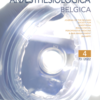Programmed intermittent epidural boluses (PIEB) in labor analgesia : a narrative review of the present
PIEB, programmed intermittent epidural bolus, AMB, automated mandatory bolus, epidural, labor analgesia, maintenance of labor analgesia, CIB, continuous intermittent bolus
Published online: Mar 29 2019
Abstract
Purpose: The programmed intermittent epidural bolus (PIEB) technique is a promising technique for maintenance of analgesia during labor. The use of this technique may offer multiple benefits over the current traditional and conventional maintenance modes such as continuous epidural infusion (CEI) and patient controlled epidural analgesia (PCEA). The goal of the present review of the literature is to summarize the current literature on the use of PIEB for labor analgesia.
Findings: From a total of 49 identified articles, 35 were included in the review. In this review we discuss the mechanism of PIEB, the current literature comparing PIEB to CEI and the ideal pump settings. PIEB, as a new analgesia maintenance technique, remains a focus of interest and intensive research with the potential to further optimize labor analgesia. When comparing PIEB technique to continuous epidural infusion (CEI), studies show a dose reduction of local anesthetic and opioid consumption, a reduction in breakthrough pain, an improvement of maternal satisfaction and a reduction of the incidence of motor block. Recently, efforts are made to refine the optimal settings for bolus dosing, time intervals and frequency for epidural analgesia with the hope to further improve safety, efficacy and patient satisfaction in the future. Further research however is needed to determine the optimal volume, flow rate, time interval and drug concentration for PIEB for labor analgesia.
Summary: We examined the recent progress and refinements of PIEB and evaluated the potential of this technique to improve safety, efficacy and maternal satisfaction during labor.
